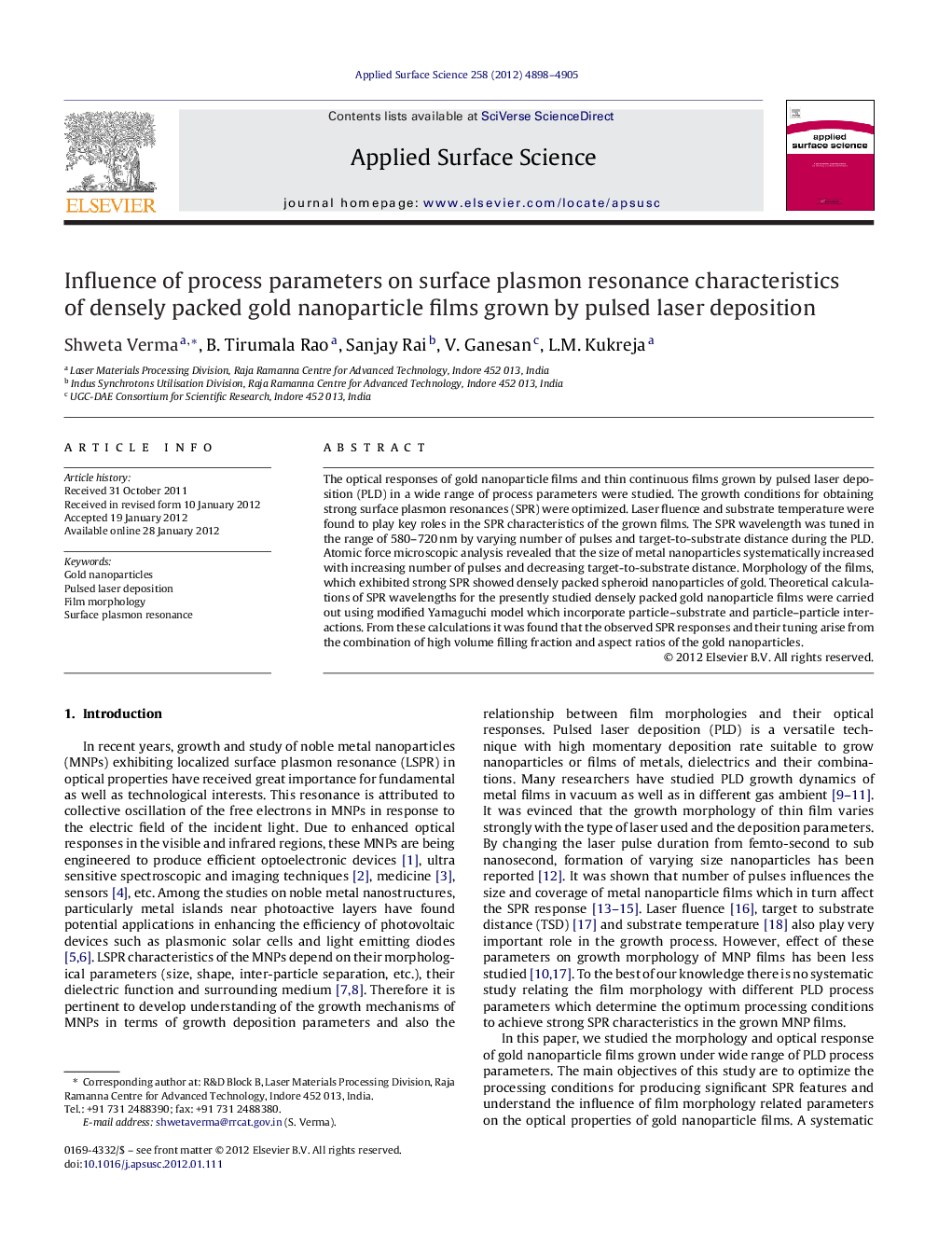| Article ID | Journal | Published Year | Pages | File Type |
|---|---|---|---|---|
| 5366393 | Applied Surface Science | 2012 | 8 Pages |
The optical responses of gold nanoparticle films and thin continuous films grown by pulsed laser deposition (PLD) in a wide range of process parameters were studied. The growth conditions for obtaining strong surface plasmon resonances (SPR) were optimized. Laser fluence and substrate temperature were found to play key roles in the SPR characteristics of the grown films. The SPR wavelength was tuned in the range of 580-720Â nm by varying number of pulses and target-to-substrate distance during the PLD. Atomic force microscopic analysis revealed that the size of metal nanoparticles systematically increased with increasing number of pulses and decreasing target-to-substrate distance. Morphology of the films, which exhibited strong SPR showed densely packed spheroid nanoparticles of gold. Theoretical calculations of SPR wavelengths for the presently studied densely packed gold nanoparticle films were carried out using modified Yamaguchi model which incorporate particle-substrate and particle-particle interactions. From these calculations it was found that the observed SPR responses and their tuning arise from the combination of high volume filling fraction and aspect ratios of the gold nanoparticles.
⺠Growth of densely packed gold nanoparticle films using pulsed laser deposition. ⺠Laser fluence and substrate temperature strongly influence surface plasmon resonance. ⺠Same plasmon resonance wavelength can be obtained in films of different thicknesses. ⺠Modeling of optical responses using modified Yamaguchi model. ⺠Volume filling fraction and aspect ratio of nanoparticles tune the plasmon resonance.
